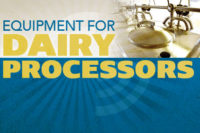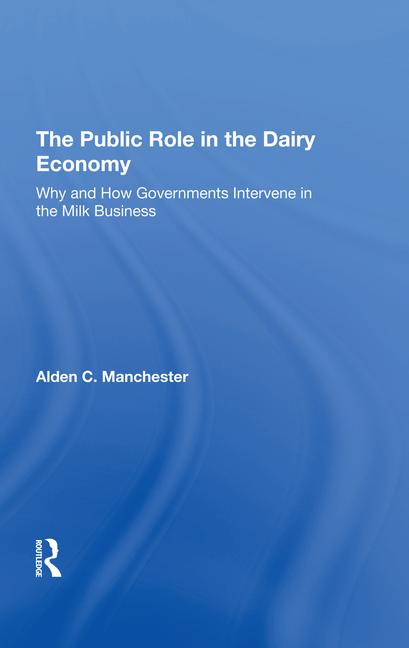Verifying the integrity of hygienic equipment design
Processors need to know that the policies and procedures they’re using are sufficient to guarantee the integrity of hygienic equipment design.

There is no better time for processors to make sure they have the policies, procedures and practices in place to help meet the objectives of new rules on Preventive Controls for Human Food under the Food Safety Modernization Act. More to the point, are the policies and procedures adequate to assure the integrity of hygienic equipment design? How are you going to do that?
Knowing the requirements
Compliance will be required in September for small businesses and in September 2018 for very small businesses. Compliance for businesses subject to the Pasteurized Milk Ordinance was extended until September 2018 to allow time for changes to the PMO safety standards that incorporate the requirements of the Preventive Controls rule.
In a previous column, we emphasized that requirements under the Preventive Controls rules are sweeping: Facilities must establish and implement a written food safety plan that includes an analysis of hazards and risk-based preventive controls.
Further, some provisions of the Current Good Manufacturing Practices (CGMPs), such as education and training in the principles of food hygiene and food safety are now binding. Nothing in the FSMA or the Preventive Controls rules specify design requirements, but the rules do call out the requirements for processor to document how they eliminate or minimize a number of hazards. Food manufacturing firms must demonstrate due diligence in manufacturing products in a sanitary environment. Sanitary design is key part of such demonstration.
Vendor qualification
The integrity of hygienic design begins with vendor qualification and selection. Can your equipment supplier provide the equipment or services to the requirements that your company expects? Vendor qualification is not solely an auditing process but rather a quality system in itself with several key elements, including:
- Qualification of vendors rests on a clear statement of critical requirements, such as a checklist of expectations and actions needed to assess suppliers. An evaluation process to make this assessment might include vendor site audits, questionnaires, evaluation of historical performance and recommendations by respected sources.
- Specifications must be defined for any material or product component provided by qualified vendors. Checklists should address specification criteria, purchase agreements and the change-management process.
- Verification is essential to affirm vendor compliance and conformance with the established materials or component specifications. Typical verification methods include some type of physical testing under appropriate controls and proof in the form of a certificate of analysis or another acceptable form of documentation.
- Monitoring reflects the type and extent of control you desire to exercise over your suppliers, based on completed qualification evaluations. They must establish and implement activities to demonstrate performance and to assure that the equipment/services they have supplied meet your requirements.
Suppliers of equipment, processing systems
When it comes to the design of equipment, vendor qualification is critical, and probably more so for suppliers of “non-standard” equipment or processing systems.
3-A Sanitary Standards for equipment and 3-A Accepted Practices for processing systems are designed to help food processors, audit professionals and regulatory sanitarians assure the integrity of the food processing system and the safety of food. The 3-A Symbol is available to equipment fabricators on a voluntary basis to signify the equipment was designed, manufactured and verified by independent inspection to conform to a 3-A Sanitary Standard.
3-A Sanitary Standards are the result of decades of collaboration among regulatory professionals at the federal and state levels, leading processors and equipment fabricators. The standards embody objective, verifiable baseline criteria and they are designed to be compatible with U.S. regulatory criteria and guidelines such as the European Hygienic Engineering & Design Group (EHEDG). Perhaps most important, 3-A Symbol-authorized equipment is backed up by the independent Third Party Verification (TPV) inspection program.
Documenting equipment safety
3-A Sanitary Standards help processors “fill the gap” to document the safety of equipment used in food processing in many important respects:
- Materials of construction, whether metals or non-metals, must be inert, nontoxic, noncorrosive, non-contaminating and impervious to moisture.
- Surface finishes must be durable, free of cracks and crevices and smooth to a minimum measure of 32 roughness average for a product contact surface.
- Joints of various types must be cleanable, crevice-free and bacteria-tight.
- All surfaces must be free draining and properly pitched or sloped to prevent any liquid pooling.
- Cleaning and inspectability are fundamental to equipment design, manufacture and installation.
- Construction elements such as dead ends, gaskets, gasket retaining grooves, O-rings and seals, threads, springs, shafts and bearings must be bacteria-tight and accessible for cleaning, sanitizing and inspection.
Both preventive controls and detective controls are essential to an effective internal control system. As the FDA rules attest, preventive controls are essential because they are proactive and emphasize quality. Detective controls play a critical role by providing evidence that the preventive controls are functioning as intended.
In the case of non-standard equipment, the responsibility falls largely to the processor and the supplier to document the safety of processing equipment. Without proper hygienic design and construction, validation of cleaning efficacy is difficult, if not impossible.
Buyer Beware
The 3-A Symbol is now being displayed by several Chinese companies without the authorization of 3-A SSI. The list of these companies is available at www.3-a.org, see ‘Buyer Beware: False or Misleading Claims.’
Looking for a reprint of this article?
From high-res PDFs to custom plaques, order your copy today!







